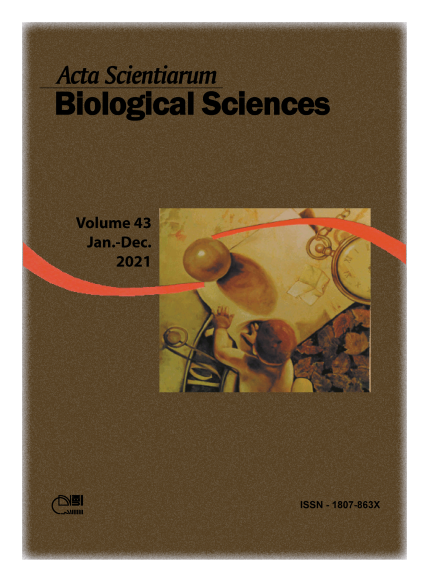Frugivorous bat (Chiroptera: Phyllostomidae) community structure and trophic relations in Atlantic Forest fragments
Resumo
We evaluated the structure of a community of frugivorous bats using composition and abundance patterns, niche amplitude and food overlap of these animals in four Atlantic Forest fragments, each one exposed to different conservation realities. For twelve months, we captured six bat species and found the seeds of 13 species of pioneering plants in 158 fecal samples. The most abundant bat species were Artibeus planirostris (25.4%), Artibeus lituratus (24.1%) and Carollia perspicillata (23.9%). Only one fragment (Fazenda Unida), the most conserved area, exhibited a significantly different composition and abundance of species. We found low trophic niche amplitude values (<0.60), associated to high food overlaps. Our results suggest that bats can adjust their foraging strategy to deal with food availability variations. By favoring pioneering plant species, the fragmentation process noted of the studied areas creates an attractive environment for bats more tolerant to this type of disturbance. The sampled areas represent important secondary forest remnants in southern Brazil that require attention to avoid an even greater loss of bat diversity.
Downloads
DECLARAÇÃO DE ORIGINALIDADE E DIREITOS AUTORAIS
Declaro que o presente artigo é original, não tendo sido submetido à publicação em qualquer outro periódico nacional ou internacional, quer seja em parte ou em sua totalidade.
Os direitos autorais pertencem exclusivamente aos autores. Os direitos de licenciamento utilizados pelo periódico é a licença Creative Commons Attribution 4.0 (CC BY 4.0): são permitidos o compartilhamento (cópia e distribuição do material em qualqer meio ou formato) e adaptação (remix, transformação e criação de material a partir do conteúdo assim licenciado para quaisquer fins, inclusive comerciais.
Recomenda-se a leitura desse link para maiores informações sobre o tema: fornecimento de créditos e referências de forma correta, entre outros detalhes cruciais para uso adequado do material licenciado.












1.png)




3.png)













